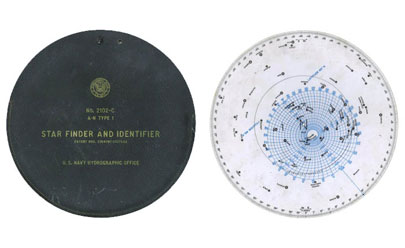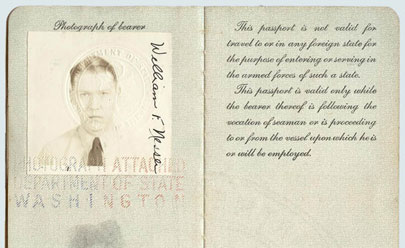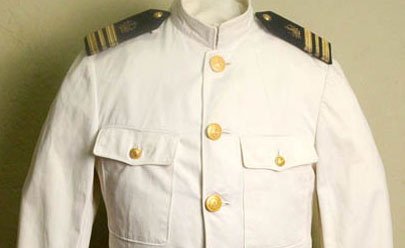FEATURED ARTIFACTS: US MERCHANT MARINE
Carrying Victory: The United States Merchant Marine
Without the United States Merchant Marine, America’s “Arsenal of Democracy” would have fired blanks during World War II. The Merchant Marine transported the military might of the United States overseas both to wage war and to support America’s allies. Like every other service branch in 1941, the Merchant Marine had to expand rapidly to meet the needs of a global war. From a prewar strength of 55,000 mariners and 1,300 cargo ships and tankers, the Merchant Marine swelled to over 215,000 personnel and 4,200 ships, nearly 75% of which were the famed Liberty ships.
The men and women of the Merchant Marine carried a staggering amount of supplies all over the world. Between 1941 and 1945, American merchant ships transported nearly 270 million tons of cargo. In 1944 alone, merchant ships departing the West Coast shipped 2,727 airplanes, 993 boats, 296 amphibious craft and 1,223 vehicles. However, the Merchant Marine paid a heavy price. One out of every twenty-six American mariners died while in the service, which was the highest percentage of deaths suffered by any service branch during World War II. Moreover, 833 large US merchant ships were lost during the war. Sadly, despite their overwhelming contribution to the Allied victory in World War II, merchant seamen could not receive any benefits for their service until President Ronald Reagan signed a bill granting them veteran status in 1988.
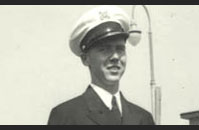 Lieutenant Commander William F. Nesser, United States Merchant Marine
Lieutenant Commander William F. Nesser, United States Merchant MarineNew Orleanian William Nesser first went to sea in 1937 with the Mississippi Shipping Company. When America entered the war, Nesser immediately became a part of the Merchant Marine. His first convoys occurred during the darkest days of the Battle of the Atlantic, when Allied ship losses were at their peak. Nesser also participated in several convoys to the Soviet Union, which came to be known as the Murmansk Run. Abandoning ship in the frigid arctic waters was almost always a death sentence.
Both of Nesser’s convoys to the Soviet Union were memorable. His first run, the infamous Convoy PQ-17, was mistakenly ordered to scatter to avoid German battleships that never left port. Of the thirty-four ships that left Iceland as part of PQ-17, only eleven survived. Nesser’s ship, the SS West Gotomska, was forced to return to port due to engine trouble and missed the carnage. On his second trip in September 1942, Nesser watched the SS Mary Luckenbach, which had just taken his ship’s place in formation, explode after being torpedoed. Sixty-six men went down with the ship.
Nesser’s most vivid memory of the Murmansk Run was arriving in Russia and being greeted by an American girl from Brooklyn, who welcomed the mariners by saying, “Hello, youse guys.” After a brief stateside rotation in New Orleans as a seamanship instructor, Nesser returned to convoy duty and carried supplies to French ports after the Normandy landings. Nesser ended the war as a Lieutenant Commander, but he continued sailing well into the 1950s.
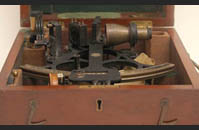 Sextant
SextantNesser purchased this navigation instrument from Baker, Lyman and Company on Magazine Street in New Orleans on 2 February 1942. He carried this invaluable tool for the rest of his nautical career.
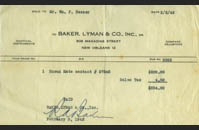 Sextant Receipt
Sextant ReceiptReceipt for Nesser’s sextant. Baker, Lyman and Company is still in operation in the New Orleans area today.
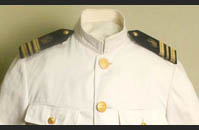 Nesser's Jacket
Nesser's JacketWilliam Nesser's Merchant Marine jacket.
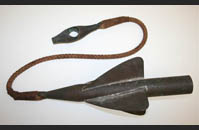 Taffrail Log
Taffrail LogAlthough the twentieth century saw rapid advancement in naval science with the introduction of radar, sonar and countless other innovations, many of the tools used by mariners during World War II were not far removed from those used by Christopher Columbus. This taffrail log, which was used by William Nesser throughout the war, was dropped over the stern of a ship and then hooked up to a gauge to determine the vessel’s speed.
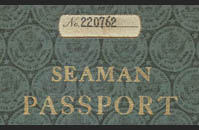 Seaman’s Passport
Seaman’s PassportThis passport, number 220762, was issued to William Nesser on 21 July 1944.
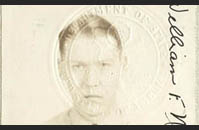 Inside Nesser's Passport
Inside Nesser's PassportInside view of passport issued to William Nesser on 21 July 1944.
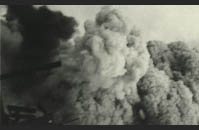 William Nesser took this photo from his ship immediately after the SS Mary Luckenbach exploded.
William Nesser took this photo from his ship immediately after the SS Mary Luckenbach exploded.
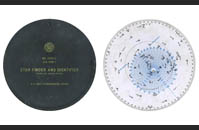 Star Finder and Identifier
Star Finder and IdentifierStar Identifiers, published by the US Navy Hydrographic Office, were an important part of a ship’s charthouse. The case contains transparent discs for various northern and southern latitudes which, when used in conjunction with the base, shows the location of fifty-seven stars and other celestial bodies used by navigators to plot positions and courses.
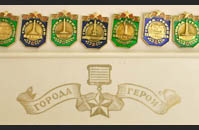 Soviet Hero City Medals
Soviet Hero City MedalsThe Soviet Union instituted the Hero City title to honor cities that performed great deeds during World War II. Nesser received these medals to honor his participation in the Murmansk Run, which brought much-needed supplies to the Soviet Union at a critical time. From left to right, the cities represented are: Moscow, Leningrad, Brest, Odessa, Kiev, Novorossiysk, Volgograd, Sevastopol, Minsk, Kerch and Tula.

